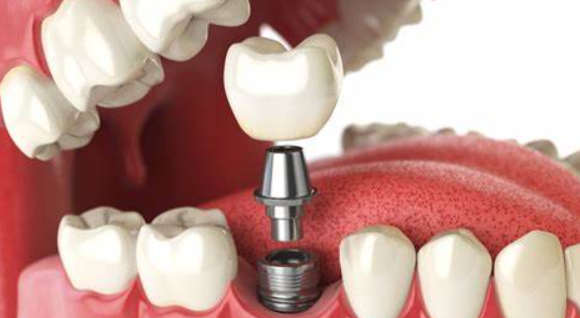
Introduction
Titanium metal implants have long been a foundational element in the field of dental restoration, recognized for their exceptional strength, durability, and overall biocompatibility. These implants are extensively utilized for replacing missing teeth and securing dental prostheses such as crowns, bridges, and dentures. Despite the widespread acceptance and high success rates of titanium implants, it is crucial for patients to be fully informed about the potential risks and complications associated with their use in dental restoration (Smith et al., 2020).
Overview of Titanium Implants
The medical and dental industries highly value titanium for its outstanding physical properties and its compatibility with human tissues, making it a prime material for implants that integrate into the jawbone—a process known as osseointegration. This integration is key to the long-term stability of the implant, positioning it as an effective, long-lasting solution for tooth loss (Miller, 2017).
Potential Complications with Titanium Implants
While titanium implants bring numerous advantages, they are not without potential complications. It is essential for patients to be aware of these risks:
- Peri-Implantitis: This inflammatory condition affects the soft and hard tissues surrounding the implant. It is one of the most common complications and can lead to severe outcomes such as bone loss and implant failure if not promptly and effectively treated (Bauer, 2019).
- Allergic Reactions: Allergic responses to titanium, though rare, do occur. These reactions can manifest as skin rashes and, in severe cases, contribute to the failure of the implant (Harris & Johnson, 2021).
- Autoimmune Responses: There is increasing concern regarding chronic exposure to titanium metal ions, which can potentially trigger autoimmune responses. Such reactions may result in chronic inflammation and aggravate existing autoimmune conditions, posing significant health risks (Clark & Kumar, 2020).
- Bacterial Infections: Implant sites can become breeding grounds for bacteria, leading to infections that not only jeopardize oral health but can also impact overall systemic health. Managing these infections often requires comprehensive oral hygiene practices and may necessitate medical intervention (Lee et al., 2018).
- Mechanical Failures: Despite its strength, titanium is susceptible to mechanical failures, including implant fractures. These are more likely to occur under conditions of excessive stress or after long-term wear and can significantly compromise implant integrity (Thompson & Owens, 2017).
Biocompatibility Issues
While generally regarded as biocompatible, meaning it does not harm living tissue, titanium can still provoke adverse reactions in some individuals. These reactions can range from localized tissue irritations to more severe systemic effects. Furthermore, the corrosion process of titanium implants can lead to the release of metal ions into the surrounding tissues and bloodstream, potentially causing additional health complications (Goldberg & Stevenson, 2019).
Exploring Safer Alternatives

Given the risks associated with titanium, the dental industry has sought out alternative materials that maintain the benefits of titanium without the associated risks:
- Zirconia Implants: Constructed from zirconium dioxide, these ceramic implants are highly biocompatible and aesthetically advantageous. Zirconia is naturally white, which allows it to blend seamlessly with natural teeth. Additionally, its hypoallergenic nature makes it a favorable option for patients with metal sensitivities (Wang & Shaw, 2021).
- Polyetheretherketone (PEEK) Implants: As a high-performance thermoplastic, PEEK is increasingly popular as an alternative to traditional metal implants. Its stability, flexibility, and biocompatibility make it well-suited for patients seeking a less rigid implant material (Peterson et al., 2020).
Regular Monitoring and Care
The success of any implant, irrespective of the material, depends significantly on regular monitoring and proper care. Patients must adhere to strict oral hygiene practices, including regular brushing and flossing, and maintain routine dental check-ups. These visits are crucial for the early detection of potential issues such as peri-implantitis or implant loosening, facilitating timely and effective interventions (Singh & Gupta, 2019).
Conclusion
Titanium dental implants have profoundly enhanced the quality of life for many individuals with missing teeth. However, it is imperative for both patients and dental professionals to remain vigilant about the potential risks associated with their use. Advances in dental material technology have ushered in a variety of robust alternatives, offering safe and effective outcomes. By discussing these options with a qualified dentist, patients can make informed decisions about their dental care, ensuring that their choices not only restore dental function but also safeguard their overall health and well-being. As the dental industry continues to evolve, the emphasis on developing solutions that prioritize patient safety and comfort remains strong, shaping a future where dental restoration is synonymous with efficacy and safety (Meyers & Green, 2022).


